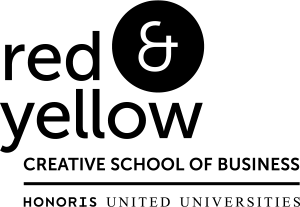The importance of having problem solving skills
 By now we all know that robots are going to take our jobs. Okay, it’s not quite as dramatic as that, but automation has already made a range of jobs redundant. That trend is only going to continue. Artificial intelligence points towards a future where machines not only do the physical work (as they have done since the Industrial Revolution), but also the “thinking” work – calculating, strategising and making informed decisions.
By now we all know that robots are going to take our jobs. Okay, it’s not quite as dramatic as that, but automation has already made a range of jobs redundant. That trend is only going to continue. Artificial intelligence points towards a future where machines not only do the physical work (as they have done since the Industrial Revolution), but also the “thinking” work – calculating, strategising and making informed decisions.
Fortunately for us, there are some human elements AI can’t replace. Problem solving is hard-wired into us; the prefrontal cortex manages the process without us even realising it. Just because it’s part of us, doesn’t mean we shouldn’t fine-tune the various problem-solving skills and techniques (yes, there’s more than one!). Problem-solving is actually one of the most important skills of the future, the one the next-gen workforce will need to master to be successful. Regardless of industry or position, everyone should be able to recognise difficulties, innovate solutions, know how to develop and implement them, and finally, assess their effectiveness – rinse and repeat.
For decades, “creativity” and “problem-solving” were seen as mutually exclusive, with logic and pragmatism responsible for finding solutions. But creativity and problem solving go hand in hand; it’s in the sweet spot of their overlap where unique human abilities such as leadership, adaptability and social intelligence are born.
Problem-solving doesn’t take one form; there are a number of well-known techniques out there. We’ve identified 5 approaches the next-gen workforce needs to thrive in the future.
How Creative Thinking feeds into problem solving
You probably already know that we believe creative thinking is the most important skill for the 21st Century. It involves solving problems or identifying opportunities when conventional thinking has failed. Creative thinking encourages you to see things differently, find fresh perspectives and come up with innovative solutions so that you can formulate a plan to overcome obstacles and reach your goals.
Back in the day cars weren’t practical; they weren’t durable and they cost a fortune owing to how expensive they were to produce. In 1908, the first Model Ts rolled off the assembly line and, suddenly, travel was transformed. Until Henry Ford invented the assembly line, there was no cost-efficient way to build a quality vehicle. Henry Ford identified the issue, and used creative thinking to find an effective solution.
Become the next Ford and try out our 5-week Creative Thinking Accelerator online course.
Human Centered Design (also known as Design Thinking)
This is an alternative approach to problem-solving that bridges the gap between problems and sustainable solutions by putting humans and their needs at the heart of the design process.
When designing safety goggles, you don’t only consider the safety aspects (how much protection they offer), but you also need to consider how comfortable they are and how stylish they look. This attention to detail will mean the difference between people choosing your product as their personal protective equipment over another’s.
The Design Thinking approach has soared in popularity over the last few years. It’s the reason why we developed our own 10-week Design Thinking online course that’s focused on changing your perspective, challenging the way you think, in order to discover innovative solutions to complex problems.
User Centered Design (UCD)
This approach invents new solutions for “users”, but predominantly focuses on user interfaces. It starts with human beings and ends with the answers that are tailored to their individual needs. Once you understand the people you are trying to reach, and then design from their perspective, you come up with unusual answers. User-Centered Design is how you are thinking and what you are doing.
On a website, it is important for a navigation menu to be clear and easy to use as it helps the user promptly reach their desired section without having to figure out how the website works.
If you’re shopping for shoes on a children’s website, a clearly labelled shoe section on the navigation menu helps users quickly by directing them to the desired section.
UCD is an important skill that gives you the tools and techniques to build a user-friendly website interface; structure content in a way that makes sense to your users, and to understand how users think and behave to inform your design.
We offer a 1-year Advanced Diploma in User-Centered Design and a 10-week online short course in User Experience Design.
Critical Thinking
In a way, this is the traditional form of problem-solving. Logic needs to be used to solve the problem at hand. Critical Thinking is about both sides of an argument. The side that has the least amount of contradictions will be supported, while the side that has the most contradictions will be discarded.
We discovered that the best way to illustrate the different kinds of problem-solving was to provide examples of each approach — we employed Critical Thinking in this very article. As one of our 10 Uniquely Human Skills, Critical Thinking is weaved into our course content and encouraged through practical application.
Graphic Design
We all know that graphic design is a skill, but it’s also a process of visual communication and problem-solving through the use of typography, photography, and illustration.
Humans are visual creatures and often we understand far better when we see something than when we hear it. Perhaps if we designed an infographic that explains the different forms of problem-solving, rather than writing an article, it would have a deeper impact.
You can master the basics of graphic design with our 14-week online short course, where you’ll learn the elements and principles of design, colour theory and typography.
Although problem-solving is built into our brains, we shouldn’t take it for granted. Rather, we should all become masters of problem-solving, trying out different techniques and testing them wherever we can. We’d love to hear about your experience as a contemporary problem-solver, whether on your own or with one of our courses; share your story or Twitter, Facebook, Instagram or LinkedIn.
Our humanness is our competitive advantage against AI and the technology of the future. Needing a competitive advantage is even more significant for the next-gen workforce, where smart machines pose an even greater threat to their livelihoods. Higher-education is adapting to this new reality, but primary and secondary schools are falling behind. Many matriculants today aren’t prepared with the “hard” technical skills or the “soft” human skills (like problem-solving!). We want to change that; that’s why we’ll be interrogating the current school curricula and see what can be done to prepare the next-gen workforce. Get more of a competitive advantage with our online short courses and accredited qualifications.
About the author
Kelly Mutizira is a Red & Yellow CDC alumni and Grad Intern. She’s also a fashion blogger and MMA amateur fighter who values women, storytelling, growth and collaboration.



